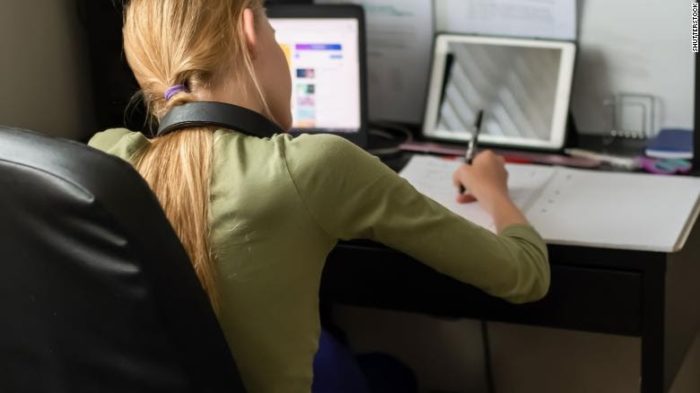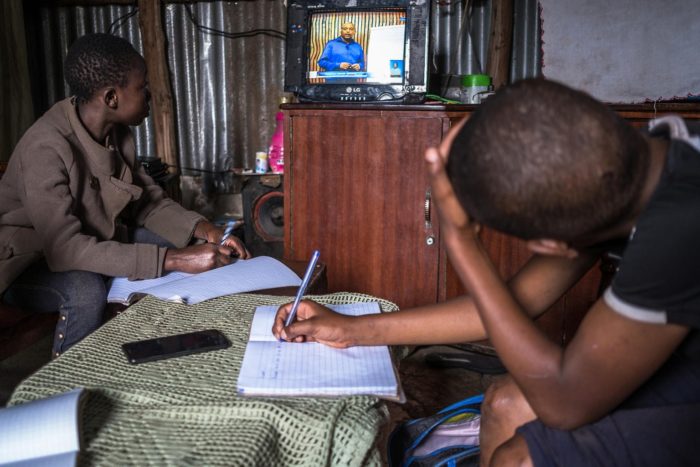By Soyoung Kim
I am an ordinary junior-year high school student, struggling with the college entrance process. A majority of American high school students must be familiar with the College Board, which defines itself on its website as a college-facilitating organization intending to help students to “navigate the transition from high school to college”. Simply put, the institution is a actually a corporate administrator for standardized tests such as SAT and AP. My first experience with the institution came in May 2019 when I took the SAT Subject Test on Mathematics, level 2. Then followed PSAT, SAT, and AP exams. The more experience one has with this test center, the more disappointment one tends to feel. With my friends, I often share an ironic joke that goes: “The only thing I learn from the College Board is Monopoly.” There are many reasons to say so.
First of all, its exam fees are too expensive for most students. Although low-income students can petition for fees to be waived, the majority of students remain hesitant or worried about taking the tests due to their absurd cost. For example, AP exams are $95 per exam for one subject, and the SAT with essay costs $68. As a high school student myself, I am supposed to take about ten AP exams until high school graduation, which will cost me altogether at least $950. Although I acknowledge that creating exam questions requires a lot of time and money, I always feel sorry for my hard-working mother who has to pay for my exams.
Secondly, even if you complete the test after paying its high price, most top American universities will not accept the AP test credits. These AP exams are advertised by the College Board as providing an academic fast track that allows students to receive college credits while in high school: “Your AP Score could earn you college credits before you even set foot on campus.” This statement does not reflect the reality as most colleges do not accept AP exam credits as college credits, and students who took AP exams often have to take the same course again in university. Especially with the pandemic, the usual three-hour AP tests are replaced with a 45-minute online exercise, causing more and more colleges to reject AP credits.

(The College Board has announced it will no longer offer the SAT subject tests, nor the SAT with Essay after June 2021.)
Third, the College Board has little consideration for international students. They pay an exam fee twice as much as the in-state students, usually ranging from $200 to $300 per test. The College Board is also inconsiderate regarding the time of the test. Last year, the online AP exams took place in Eastern Standard Time, meaning tens of thousands of international students had to take the exam from 1 am to 3 am in the Asian time zone or during late evening in Europe. This reality stands in stark contrast to the College Board’s statement that students should get eight hours of sleep before the exam. Some students who returned to their home countries due to the pandemic had to attend virtual classes throughout the night while taking the exam at the same time. This policy apparently places many students at a disadvantage.
Fourth, the 2020 online AP Exam clearly shows the gap between the rich and the poor. Although the College Board is not blamed for it. I’ve heard that they pledged to provide laptops and internet access for those in need. However, there was no one around me who actually got this help. One of my friends had no access to laptops or an internet connection, so she went downtown to take the exam in the streets with a WiFi connection from Starbucks. On the other hand, some students had one or two big screens at home and fast internet, which should be a big advantage for a test with long passages given under a strict time constraint. According to a study by Common Sense Media and the Boston Consulting Group, thirty percent of all K-12 public school pupils don’t have a stable internet connection or an adequate device for virtual learning such as computers. It is outrageous to see the wealth gap further encouraging the education gap.

(Elizabeth Achieng, in Kenya, studies at home by watching an education TV channel called EDU TV. Justin the neighbour’s child also joins her to watch the program and do his revisions since at their place they don’t have a TV set. PHOTO BY BRIAN OTIENO/STORITELLAH.COM)
Lastly, the AP Classroom is not a good environment in which to study. AP Classroom is a platform created by the College Board that provides resources such as videos for certain topics and multiple-choice and open-ended practice questions. Many people would agree that the materials are of low quality compared to references like Princeton Review, and Barron’s. Even my teachers are reluctant to use AP Classroom questions.
There is much room for the College Board to improve and upgrade their service, and they must consider every aspect seriously as more than 15 million high school students rely on them for college entrance. It is only by recognizing the needs of its students that the College Board could become a better platform that provides more advanced education for their candidates. Right now, by being an example of what can go wrong, it also highlights the pivotal importance of such educational institutions in students’ lives and futures.
————————————————————
About the College Board (www.collegeboard.org)
College Board is a mission-driven not-for-profit organization that connects students to college success and opportunity. Founded in 1900, College Board was created to expand access to higher education. Today, the membership association is made up of over 6,000 of the world’s leading educational institutions and is dedicated to promoting excellence and equity in education. Each year, College Board helps more than seven million students prepare for a successful transition to college through programs and services in college readiness and college success—including the SAT® and the Advanced Placement® Program. The organization also serves the education community through research and advocacy on behalf of students, educators, and schools. For further information, visit collegeboard.org.
